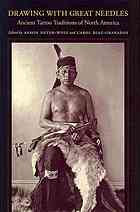

Most ebook files are in PDF format, so you can easily read them using various software such as Foxit Reader or directly on the Google Chrome browser.
Some ebook files are released by publishers in other formats such as .awz, .mobi, .epub, .fb2, etc. You may need to install specific software to read these formats on mobile/PC, such as Calibre.
Please read the tutorial at this link: https://ebookbell.com/faq
We offer FREE conversion to the popular formats you request; however, this may take some time. Therefore, right after payment, please email us, and we will try to provide the service as quickly as possible.
For some exceptional file formats or broken links (if any), please refrain from opening any disputes. Instead, email us first, and we will try to assist within a maximum of 6 hours.
EbookBell Team

4.4
92 reviewsFor
thousands of years, Native Americans throughout the Eastern Woodlands
and Great Plains used the physical act and visual language of tattooing
to construct and reinforce the identity of individuals and their place
within society and the cosmos. The act of tattooing served as a rite of
passage and supplication, while the composition and use of ancestral
tattoo bundles was intimately related to group identity. The resulting
symbols and imagery inscribed on the body held important social, civil,
military, and ritual connotations within Native American society. Yet
despite the cultural importance that tattooing held for prehistoric and
early historic Native Americans, modern scholars have only recently
begun to consider the implications of ancient Native American tattooing
and assign tattooed symbols the same significance as imagery inscribed
on pottery, shell, copper, and stone.
Drawing with Great Needles
is the first book-length scholarly examination into the antiquity,
meaning, and significance of Native American tattooing in the Eastern
Woodlands and Great Plains. The contributors use a variety of
approaches, including ethnohistorical and ethnographic accounts, ancient
art, evidence of tattooing in the archaeological record, historic
portraiture, tattoo tools and toolkits, gender roles, and the meanings
that specific tattoos held for Dhegiha Sioux and other Native speakers,
to examine Native American tattoo traditions. Their findings add an
important new dimension to our understanding of ancient and early
historic Native American society in the Eastern Woodlands and Great
Plains.